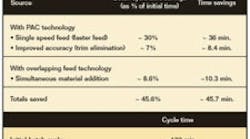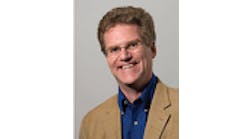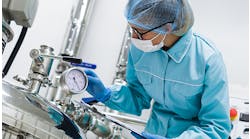Procter & Gamble's (P&G’s) only North American heavy-duty liquid detergent production facility is located in
Defer Spending
Chappell says P&G’s goal was to boost production on existing lines and ultimately defer spending on new process capacity. "Our engineering group determined that by increasing the production speed on sold-out or near sold-out manufacturing lines, we could potentially defer the construction of new manufacturing lines or, better still, defer the construction of entirely new manufacturing facilities" says Chappell. The problem he says "was that increasing material transfer speed could mean giving up some of accuracy. Yet maintaining the current level of accuracy meant giving up the potential for increased speed and the benefits it would yield! We were faced with finding a solution to this dilemma."
The Solution
After investigating the advanced process control techniques commonly used in many continuous processes (but not commonly used in batch processes), the engineering group identified model-based Predictive Adaptive Control (PAC) as a possible way to achieve the company’s desired goals. To get things started , P&G chose to upgrade the material feed phase (ingredient addition) of the process at its Lima, Ohio facility. Along with planning the solution for the Lima site, the engineering group’s mandate included making the solution globally deployable and available to improve production at P&G liquid detergent plants worldwide.
This approach needed reliable measurement devices and very repeatable application scenarios. After doing their homework, P&G’s engineering group selected Mettler Toledo as to define the hardware and software required to implement the innovative PAC technology solution. The combination of technologies was named Qi for Quantum Impact, which P&G’s engineering group characterized as offering simplified engineering, a consistent manufacturing result and increased speed and quality. According to Mettler Toledo, P&G recently signed a licensing agreement and plans to upgrade 40% of its global production facilities with Qi systems within the next 5 years.
Leaner Team, Higher Production
Today the Lima facility manufactures in excess of 120 million lbs. of finished product annually using only five manufacturing systems (mixing units) and a very lean production team. The smaller team’s ability to get the job done is due in part to the reduced need for regular operator intervention of ingredient addition "set point" trimming that the previous system required.
The savings that the Lima facility gained as a result of these technologies are shown in the Table. The savings are shown as a percentage of the initial batch cycle time and are also expressed in manufacturing minutes gained.
Chappell put the results into perspective, pointing to its post-project analysis: "A study conducted by our process improvement team, identified savings and investment deferment in excess of $5 million. These savings were directly attributable to the PAC implementation and overlapping feed technologies. The use of these technologies resulted in increased manufacturing capacity and throughput with no incremental costs other than for raw materials, and in the elimination and/or deferment of any additional capital investment required to meet market demand. This investment would have been essential had this increased capacity not been possible in the existing batch control system."




